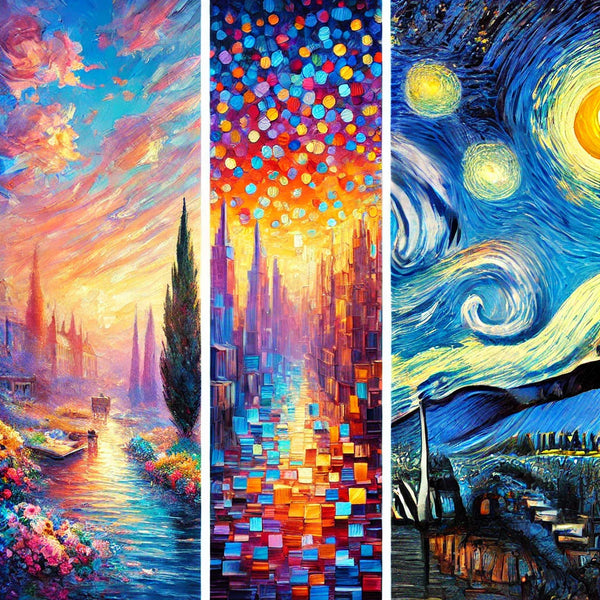
Impressionism, Neo-Impressionism, and Post-Impressionism: Key Differences
Impressionism, Neo-Impressionism, and Post-Impressionism are three major art movements that shaped modern painting, each with distinct characteristics and innovations.
Impressionism (1860s–1880s): Capturing Fleeting Moments
Impressionism emerged in France in the late 19th century as a response to academic art. Artists like Claude Monet, Pierre-Auguste Renoir, and Edgar Degas focused on capturing light, color, and movement rather than precise details. They used quick, visible brushstrokes and painted outdoor scenes to depict fleeting moments of everyday life. Their work emphasized atmosphere and perception rather than rigid realism.
Neo-Impressionism (1884–1890s): A Scientific Approach
Developed by Georges Seurat and Paul Signac, Neo-Impressionism sought to bring structure and scientific precision to Impressionism. Instead of loose brushstrokes, Neo-Impressionists used the technique of pointillism—applying tiny dots of pure color that visually blend in the viewer’s eye. This method, influenced by color theory, created a more systematic and calculated effect while preserving the Impressionists’ focus on light and color.
Post-Impressionism (1880s–1905): Expressing Emotion and Form
Post-Impressionism was not a unified movement but rather a reaction against Impressionism’s focus on fleeting moments. Artists like Vincent van Gogh, Paul Cézanne, and Paul Gauguin sought to express deeper emotions, structure, and symbolism in their works. They moved away from Impressionist spontaneity, using bold colors, thick brushstrokes, and abstract forms to create personal and symbolic interpretations of the world.
| Feature | Impressionism | Neo-Impressionism | Post-Impressionism |
|---|---|---|---|
| Time Period | 1860s–1880s | 1884–1890s | 1880s–1905 |
| Key Artists | Monet, Renoir, Degas | Seurat, Signac | Van Gogh, Cézanne, Gauguin |
| Technique | Loose brushstrokes, light and color focus | Pointillism, scientific color theory | Bold colors, thick brushstrokes, emotional depth |
| Subject Matter | Everyday life, nature, outdoor scenes | Structured compositions, urban life | Symbolism, abstraction, emotional expression |
| Influence | Traditional realism | Impressionism | Impressionism, leading to modern art |
While Impressionism sought to capture the present, Neo-Impressionism brought order, and Post-Impressionism infused art with emotion and personal meaning. Together, these movements paved the way for modern art, influencing styles such as Fauvism and Cubism.
https://artme.co.uk/products/exerz-90x120cm-canvas-deep-edge

